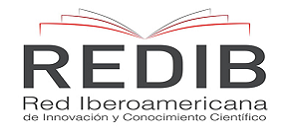The effect of the 2016 Rio de Janeiro Olympics on spectators’ physical activity
Keywords:
Sport, Public Health, EpidemiologyAbstract
Objectives: This study aimed to explore the influence of the 2016 Rio de Janeiro Olympics on physical activity motivation and behaviour among spectators.
Methods: The sample comprised 1851 spectators (mean age 36.6±12.7 years). Participants were asked via intercept surveys whether the Olympics changed or will change their desire to engage in regular physical activity, and whether they had increased their physical activity.
Findings: 60.2% reported changes in their desire to engage in regular physical activity and 51.6% increased their physical activity. Those under 55 years of age were significantly more likely to change their desire to engage in regular physical activity (OR 1.54, 95% CI 1.14 to 2.08). Non-Brazilians (versus Brazilians) were significantly more likely to report a change in their desire to engage in regular physical activity, and to have increased their physical activity (OR 1.28, 95% CI 1.05 to 1.57; OR 1.40, 1.15 to 1.71, respectively).
Conclusions: While previous studies have found no relationship between Olympics and population physical activity, our findings suggest that the Olympics may provide a unique opportunity to improve levels of physical activity.
Downloads
References
Chacón-Cuberos R, Arufe-Giráldez V, Cachón-Zagalaz J, Zagalaz-Sánchez ML, Castro-García. Relational research of sport practice in schoolchildren depending on gender. SPORT TK. 2016;5(1):85-92. https://doi.org/10.6018/249161
Smith L, Fisher A, Hamer M. Television viewing time and risk of incident obesity and central obesity: the English longitudinal study of ageing. BMC Obes. 2015;2(1):12. https://doi.org/10.1186/s40608-015-0042-8
Hamer M, Aggio D, Knock G, Kipps C, Shankar A, Smith L. Effect of major school playground reconstruction on physical activity and sedentary behaviour: Camden active spaces. BMC Public Health. 2017;17:552. https://doi.org/10.1186/s12889-017-4483-5
López-Sánchez GF, Ahmed D, Díaz-Suárez A. Level of habitual physical activity among 13-year-old adolescents from Spain and India. A cross-cultural study. SPORT TK. 2017;6(1):67-74. https://doi.org/10.6018/280421
López-Sánchez GF, González-Víllora S, Díaz-Suárez A. Level of habitual physical activity in children and adolescents from the Region of Murcia (Spain). SpringerPlus. 2016;5(386):1-6. https://doi.org/10.1186/s40064-016-2033-8
Müther M, Williamson M, Williamson L. Impact of the 2012 London Olympic and Paralympic Games on Physical Activity of Rheumatology Patients. J Clin Rheumatol. 2014;20(7):376-378.
Williams G, Aggio D, Stubbs B, Pardhan S, Gardner B, Smith L. Physical activity levels in children with sensory problems: Cross-sectional analyses from the Millennium Cohort Study. Disabil. Health J. 2017;11(1):58-61. https://doi.org/10.1016/j.dhjo.2017.07.002
Carter RV, Lorenc T. A qualitative study into the development of a physical activity legacy from the London 2012 Olympic Games. Health Promot Int. 2013;30(3):793-802. https://doi.org/10.1093/heapro/dat066
Bauman A, Bellew B, Craig CL. Did the 2000 Sydney Olympics increase physical activity among adult Australians? Br J Sports Med. 2015;49(4):243-247. https://doi.org/10.1136/bjsports-2013-093149
Craig CL, Bauman AE. The impact of the Vancouver Winter Olympics on population level physical activity and sport participation among Canadian children and adolescents: population based study. Int J Behav Nutr Phys Act. 2014;11(1):107. https://doi.org/10.1186/s12966-014-0107-y
Potwarka LR, Leatherdale ST. The Vancouver 2010 Olympics and leisure-time physical activity rates among youth in Canada: any evidence of a trickle-down effect? Leisure Studies. 2016;35(2):241-257. https://doi.org/10.1080/02614367.2015.1040826
Bretherton P, Piggin J, Bodet G. Olympic sport and physical activity promotion: the rise and fall of the London 2012 pre-event mass participation ‘legacy’. Int Journal Sport Policy & Politics. 2016;8(4):609-624. https://doi.org/10.1080/19406940.2016.1229686
Mahtani KR, Protheroe J, Slight SP et al. Can the London 2012 Olympics ‘inspire a generation’to do more physical or sporting activities? An overview of systematic reviews. BMJ Open. 2013;3(1):e002058. https://doi.org/10.1136/bmjopen-2012-002058
Sandercock GR, Beedie C, Mann S. Is Olympic inspiration associated with fitness and physical activity in English schoolchildren? A repeated cross-sectional comparison before and 18 months after London 2012. BMJ Open. 2016;6(11):e011670. https://doi.org/10.1136/bmjopen-2016-011670
Smith NR, Lewis DL, Fahy A, et al. Changes in physical activity in East London’s adolescents following the 2012 Olympic Games: findings from the prospective Olympic Regeneration in East London (ORiEL) cohort study. Eur J Public Health. 2014;24(Suppl. 2):cku162-062. https://doi.org/10.1093/eurpub/cku162.062
Weed M, Coren E, Fiore J, et al. Developing a physical activity legacy from the London 2012 Olympic and Paralympic Games: a policy-led systematic review. Perspect Public Health. 2012;132(2):75-80. https://doi.org/10.1177/1757913911435758
Darko N, Mackintosh C. Don’t you feel bad watching the Olympics, watching us?’A qualitative analysis of London 2012 Olympics influence on family sports participation and physical activity. Qualitative Research in Sport, Exercise & Health. 2016);8(1):45-60. https://doi.org/10.1080/2159676x.2015.1056825
Gillespie P. Half of Brazilians are against the Olympics. CNNMoney (New York). 2016, July 20. Available from: http://money.cnn.com/
Downloads
Published
How to Cite
Issue
Section
License
Copyright and Licensing
For all articles published in Atena Journals, copyright is retained by the authors. Articles are licensed under an open access Creative Commons CC BY 4.0 license, meaning that anyone may download and read the paper for free. In addition, the article may be reused and quoted provided that the original published version is cited. These conditions allow for maximum use and exposure of the work, while ensuring that the authors receive proper credit.
Reproducing Published Material from other Publishers
It is absolutely essential that authors obtain permission to reproduce any published material (figures, schemes, tables or any extract of a text) which does not fall into the public domain, or for which they do not hold the copyright. Permission should be requested by the authors from the copyrightholder (usually the Publisher, please refer to the imprint of the individual publications to identify the copyrightholder).
Permission is required for:
- Your own works published by other Publishers and for which you did not retain copyright.
- Substantial extracts from anyones' works or a series of works.
- Use of Tables, Graphs, Charts, Schemes and Artworks if they are unaltered or slightly modified.
- Photographs for which you do not hold copyright.
Permission is not required for:
- Reconstruction of your own table with data already published elsewhere. Please notice that in this case you must cite the source of the data in the form of either "Data from..." or "Adapted from...".
- Reasonably short quotes are considered fair use and therefore do not require permission.
- Graphs, Charts, Schemes and Artworks that are completely redrawn by the authors and significantly changed beyond recognition do not require permission.
Obtaining Permission
In order to avoid unnecessary delays in the publication process, you should start obtaining permissions as early as possible. If in any doubt about the copyright, apply for permission. Atena Journals cannot publish material from other publications without permission.
The copyright holder may give you instructions on the form of acknowledgement to be followed; otherwise follow the style: "Reproduced with permission from [author], [book/journal title]; published by [publisher], [year].' at the end of the caption of the Table, Figure or Scheme.














